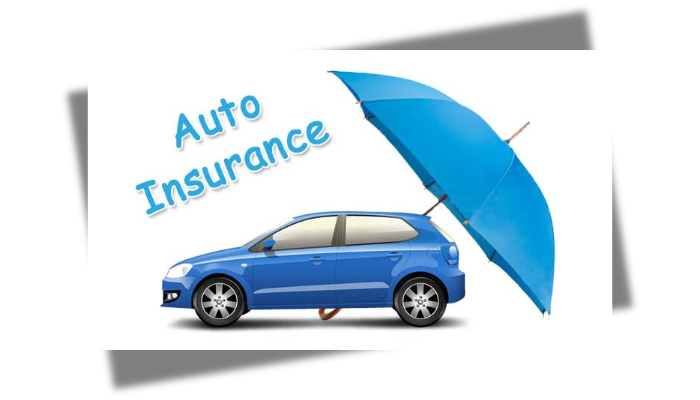Understanding the Basics of Auto Insurance

What is Auto Insurance?
A financial safety net, auto insurance is intended to shield you, your car, and other drivers from harm, theft, or accidents. The insurance provider and you essentially get into an arrangement whereby you pay a premium and they cover specific risks according to your plan.
Why is Auto Insurance Important?
Imagine operating a vehicle without any financial safeguards. Repair costs, medical expenses, and possible legal fees are entirely your responsibility in the event of an accident. In most areas, auto insurance complies with legal requirements while protecting you against these crippling costs.
Essential Types of Coverage in an Auto Insurance Plan
Liability Insurance: Protecting Against Third-Party Damages
Any auto insurance plan’s foundation is liability insurance. It includes harm you inflict on other people.
Bodily Injury Liability
If you unintentionally cause damage to someone else’s vehicle or property, this coverage will cover the cost of replacement or repairs.
Property Damage Liability
If you unintentionally cause damage to someone else’s vehicle or property, this coverage will cover the cost of replacement or repairs.
Collision Coverage: Repairing Your Vehicle
This type of coverage pays for repairs to your car if you’re involved in an accident, regardless of fault. If you drive a newer or financed car, collision coverage is often a must-have.
Comprehensive Coverage: Protection Beyond Collisions
Damages not brought on by a collision are covered by comprehensive coverage. Consider situations such as natural disasters, theft, or vandalism. It offers the best peace of mind protection against unforeseen circumstances.
Personal Injury Protection (PIP): Covering Medical Costs
PIP guarantees coverage for medical expenses, rehabilitation costs, and occasionally even lost income, irrespective of who is at fault in an accident.
Uninsured/Underinsured Motorist Coverage
In the event that you are struck by a motorist who lacks insurance or whose coverage is inadequate, this add-on can help you avoid having to pay for repairs and medical expenses out of pocket.
Optional Add-Ons to Enhance Your Insurance Plan
Gap Insurance
If your automobile is totaled in an accident, this covers the difference between the current value of your vehicle and the amount you owe on a loan or lease.
Roadside Assistance Coverage
Ever been stranded with a flat tire or dead battery? Roadside assistance covers towing, battery jumps, and other emergency services.
Rental Car Reimbursement
If you suffer an accident and your car is in the repair, rental car reimbursement makes sure you have a car to get by.
Custom Equipment Coverage
This coverage safeguards your investment if your automobile has been customized with rims or a sound system.
Factors to Consider When Choosing Your Coverage
Your Vehicle’s Value
Comprehensive and collision coverage may not be worth the money for an older vehicle. But these are essential for a modern car.
Your Driving Habits
If you drive long miles or commute every day, you might need more comprehensive coverage.
Your Budget
While it’s tempting to minimize costs, skimping on coverage can backfire in the long run. Balance affordability with adequate protection.
Legal Requirements in Your State
Every state has minimum car insurance requirements. Check your local laws to ensure compliance while building your plan.
How to Customize Your Car Insurance Plan for Maximum Benefits
Choosing the Right Deductible
Higher deductibles mean lower premiums, but they also mean paying more out of pocket in the event of a claim. Find a balance that works for your financial situation.
Bundling Insurance Policies for Discounts
Combining your auto insurance with your house or renter’s insurance can simplify your plans and save you money.
Reviewing and Adjusting Coverage Annually
Review your coverage to make sure it still suits your needs when your automobile matures or your situation changes.
Common Mistakes to Avoid When Selecting an Auto Insurance Plan
Underestimating Coverage Needs
If you only buy the bare minimum of coverage, you could end up having to pay a lot of money out of pocket after an accident.
Ignoring Add-Ons That Could Be Beneficial
People often forget about optional coverages like rental reimbursement or roadside help, but they can save your life.
Overlooking Policy Exclusions
Know what your coverage doesn’t cover so you don’t get caught off guard later.
The Role of Discounts and How to Qualify for Them
Safe Driver Discounts
If you want lower rates, keep your driving record clean.
Multi-Car Discounts
Insuring multiple vehicles with the same provider can reduce costs.
Good Student Discounts
Students with high grades often receive discounts as they’re seen as lower-risk drivers.
Conclusion: Building the Right Auto Insurance Plan
Choosing the right types of auto insurance coverage is about balancing protection and cost. Start with the essentials—liability, collision, and comprehensive—and layer on add-ons that suit your lifestyle. Remember, the best plan is one that gives you confidence every time you hit the road.
FAQs
What is the most important type of auto insurance coverage?
Liability insurance is crucial as it covers damages you cause to others, which is legally required in most states.
How do I know if I need comprehensive coverage?
If your car is brand new or worth a lot of money, you might want to think about getting complete coverage to protect it against theft or damage that isn’t caused by an accident.
Is it worth adding roadside assistance to my insurance plan?
Yes, especially if you frequently drive long distances or in remote areas where roadside help might be hard to find.
What factors affect the cost of my car insurance premiums?
Factors include your age, driving history, location, vehicle type, and coverage levels.
Factors include your age, driving history, location, vehicle type, and coverage levels.
Yes, most insurance providers allow you to adjust your coverage during the policy term, though it may affect your premium.